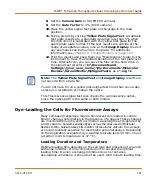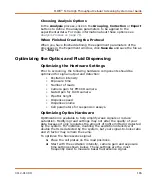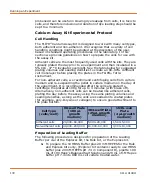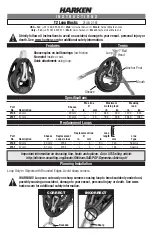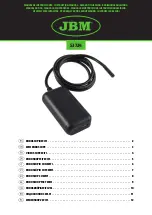
Running an Experiment
162
0112-0109 H
at 37 °C is usually effective for most cell lines and is the recommended
starting point for calcium mobilization assay development.
Preparing a Source/Compound Plate
Preparation Time for the Source Plate
Depending on assay complexity, source plate preparation time may
vary. To avoid conflicts, plan your experiment carefully to ensure source
plates are ready before dye loading is complete.
Recommended Source Plates
Compound conservation can be achieved by reducing dead volumes
and minimizing source plate adherence. Reducing source plate
adherence help to ensure proper compound concentrations are
delivered to a read plate. Polypropylene plates are most commonly
used for this purpose because they are solvent-resistant, can withstand
repeated freeze-thaws, and have a low retention. In addition, proteins
are less likely to adhere to polypropylene plates rather then polystyrene
surface.
Manufacturers offer a wide selection of plate bottom shapes (U-, V- or
flat bottom) to lessen dead volumes. Dead volumes decrease as you
move from a flat to U- to V-bottom plates. Contact the plate
manufacturer for the dead volume in the plates you are using.
Concentration of Compounds in the Source Plate
Compound concentrations are prepared based on ratio of addition to
initial well volume of the read plate. Common final concentrations are
3X, 4X or 5X because ratio of addition to read plate volumes are 1:3,
1:4 or 1:5, respectively. Volume of addition is dependent on compound
mixing efficiency, cell adherence, and kinetics of cellular response.
Assay development should always be performed to determine optimal
addition volume and concentrations prior to screening.
Addition and Mixing of Compounds to the Cell Plate
Prompt mixing is required to initiate robust cellular kinetics associated
with signal transduction assays. Proper addition parameters (for
example, dispense speed, height, and volume) will initiate a rapid
response upon addition. Slow signal increases or variation in signal
Note:
If loading for 30 min yields an acceptable fluorescence signal,
as has been observed for some cell lines, use the shorter loading time.
In some cases, incubation at room temperature may work as well or
better than 37° C.
Summary of Contents for FLIPR Tetra
Page 1: ...FLIPR Tetra High Throughput Cellular Screening System User Guide 0112 0109 H December 2011...
Page 12: ...Contents 12 0112 0109 H...
Page 16: ...System Overview 16 0112 0109 H...
Page 40: ...System Hardware Features 40 0112 0109 H...
Page 148: ...Exchanging Hardware 148 0112 0109 H...
Page 156: ...Calibration and Signal Test 156 0112 0109 H...
Page 196: ...Running an Experiment 196 0112 0109 H...
Page 232: ...Robotic Integration 232 0112 0109 H The following drawings illustrate these requirements...
Page 282: ...Data Processing Algorithms 282 0112 0109 H...
Page 294: ...Consumables and Accessories 294 0112 0109 H...
Page 298: ...Using AquaMax Sterilant 298 0112 0109 H...
Page 302: ...Electromagnetic Compatibility EMC 302 0112 0109 H...














